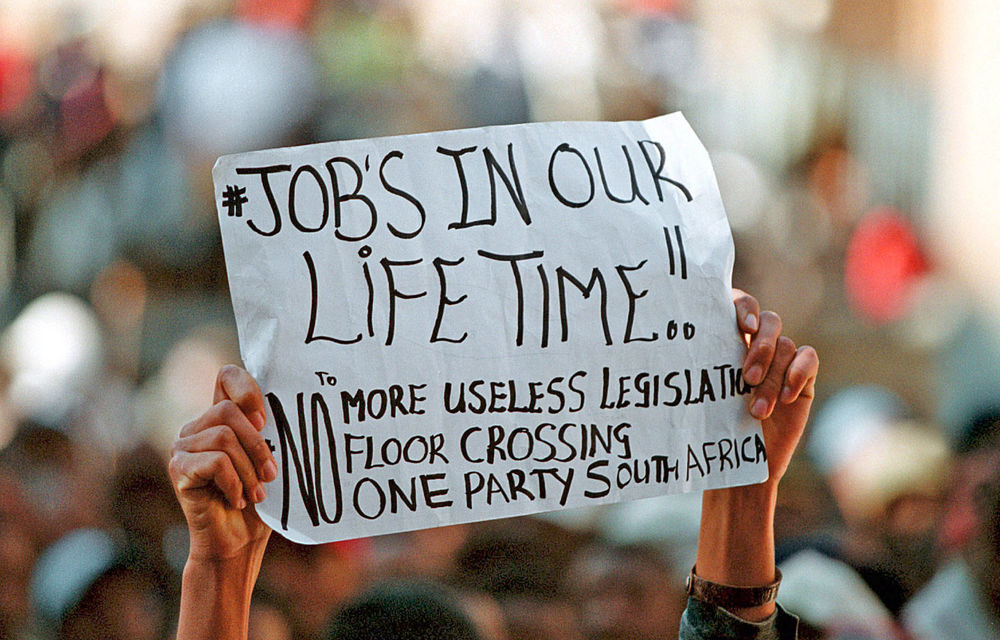Business
South Africa Faces Job Market Setback as Economy Falters and Graduate Influx Hits

Economists are sounding the alarm ahead of the next Quarterly Labour Force Survey (QLFS) set to be released by Stats SA next week, warning that employment figures for the first quarter of 2025 could be dismal.
The previous QLFS brought a glimmer of hope, showing a 0.2 percentage point drop in the official unemployment rate—from 32.1% in Q3 to 31.9% in Q4 2024—driven mainly by temporary seasonal hiring over the festive period. Employment increased by 132,000 jobs during that time, reaching a total of 17.1 million employed persons.
But that short-lived improvement may be erased as fresh school-leavers and university graduates enter an already saturated job market in Q1, while companies scale back after the holiday hiring boom.
According to the Bureau for Economic Research (BER), this seasonal trend almost always leads to a spike in unemployment at the beginning of the year.
“The entry of school-leavers to the labour market during a quarter, when many seasonal festive season jobs are shed, often means a lift in the unemployment rate in Q1,” said BER.
Economists at Nedbank added that ongoing economic stagnation is compounding the issue, with sluggish growth in sectors like manufacturing and mining limiting job creation opportunities.
Economic and Political Headwinds Slow Job Creation
The outlook isn’t just a seasonal concern—it reflects deeper structural issues.
Economic growth in South Africa is projected to remain between 1% and 1.5% in 2025, barely keeping pace with population growth. This means that, on a per-person basis, the economy is not growing at all—it’s stagnating, or even declining.
Nedbank pointed to external shocks like the rise in US tariffs and growing uncertainty within South Africa’s Government of National Unity (GNU) as further reasons for investor caution.
“The unsettled environment will likely convince companies to adopt a wait-and-see approach in the short term before rushing to expand operations,” the bank warned.
Can Operation Vulindlela 2.0 Save the Job Market?
President Cyril Ramaphosa has pinned hopes on the second phase of Operation Vulindlela, a flagship economic reform programme, to unlock growth and generate jobs. The plan aims to push South Africa’s growth rate to over 3% by the end of the decade.
But the BER remains skeptical, warning that many Phase 1 reforms remain incomplete, and adding more to the list may simply dilute focus and slow progress.
Even if reforms were implemented flawlessly, economists caution that external risks like trade disputes and AGOA uncertainty—particularly under a Trump-led US administration—could throw cold water on the plan.
Should South Africa lose its preferential access to US markets under the African Growth and Opportunity Act (AGOA), the agricultural and automotive sectors stand to lose thousands of jobs.
Unless bold action is taken to implement economic reforms, diversify trade, and stimulate growth, South Africa’s unemployment crisis is likely to worsen in 2025. The country faces a dual challenge: an expanding labour force met with dwindling job opportunities.
The upcoming labour force data is expected to confirm what many fear—the gap between job seekers and job availability is widening, not shrinking.
For now, economists are urging the government to prioritize reforms that create real, long-term opportunities—and to prepare for the economic pain that may lie ahead.
{Source: BusinessTech}
Follow Joburg ETC on Facebook, Twitter , TikTok and Instagram
For more News in Johannesburg, visit joburgetc.com


























